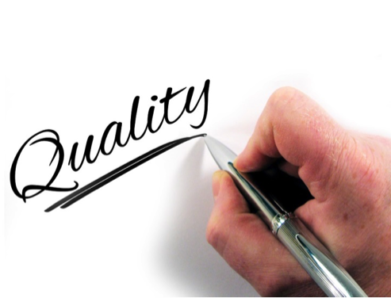Quality encompasses ‘subjective/perceived quality’ and ‘objective/technical quality’ and has been defined in varied ways as mentioned below:
- Degree of excellence – Oxford dictionary
- Fitness for purpose – Edward Deming
- The totality of characteristics of an entity that bear on its ability to satisfy stated or implied needs – ISO.
There are lot of parameters by which quality in medical writing can be judged. The foremost is the quality of the content of the document that has been written. For the same, the content is judged by the written English language, spelling and grammar, flow of the content, does it send out the message as it needs to, whether the data presentation, analysis and interpretation are accurate, whether it is written in lean and concise manner, use of style guide (covering text styles, punctuation, abbreviations, capitalization, number and date formats, etc.), use of all and correct source documents (data tables, protocol, protocol summary, statistical analysis plan, clinical study reports, etc., depending on the document to be reviewed), template adherence, formatting (styles, page layout, pagination, headers and footers), intra-document consistency -– synopsis/summary/conclusions versus the main body of the document, tabular data quoted in text – specifically for protocols, the schedule of assessments table versus the text, company-specific authoring toolbars.
To ensure the highest quality in the content of the document as mentioned above, it is but natural to have a strong robust in the process of developing the document. Hence, it is essential to have a standard operating procedure (SOP) for drafting, review, and approval with model document templates, conducting periodic mock assessments, periodic trainings for not only medical writing but generally good clinical practise, regulatory updates, project management etc; developing a quality control checklist, use of Gantt charts for complex projects and stringent timelines, understanding expectations, setting realistic goals, having a detailed kick off meeting, getting information from key opinion leaders, frontloading as much as possible, periodic updates and oversight, follow-up and reminders to get data, discussing complex data or conflicting comments in adjudication meetings, use of software/s and technology/ies to your advantage, developing automated processes, maintaining audit friendly records and trail are few of the important things to be taken into consideration.
Quality is not just about checking spacing, abbreviations list, or capitalization are correct or incorrect, rather it is also about how you can provide and use your scientific and research knowledge and make the document more accurate, concise, aligned with regulatory requirements and proactively ensuring to write correct the very first time, so that you have very less comments during review leading to less revisions and easy finalization. Also, ensuring good communication and collaboration and relationship building is very important. All the points mentioned above will lead to good quality document, thereby ensuring good customer satisfaction scores and repeat business from the Sponsor. Finally, in short, we can say quality is fit for purpose, confirming to requirements, value for money, drives profitability, a standard, and experience by itself.








